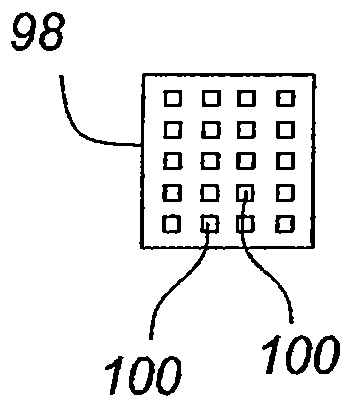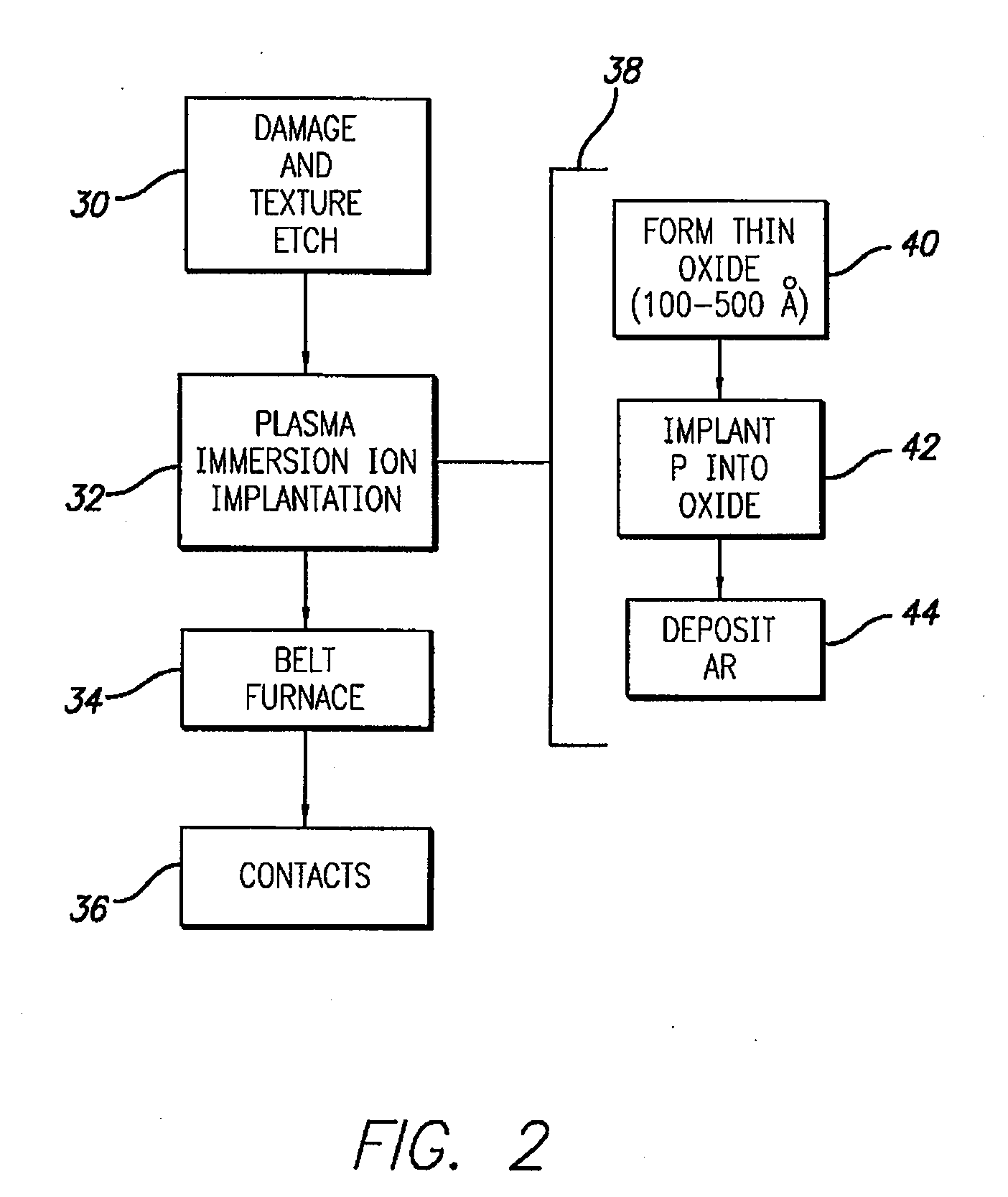Method of making an improved selective emitter for silicon solar cells
a selective emitter and solar cell technology, applied in semiconductor/solid-state device manufacturing, semiconductor devices, electrical equipment, etc., can solve the problems of high cost and undesirable effects of the art process used to achieve the selectively patterned emitter doping profile using lithographic or screen printing processing, and the difficulty of forming a low resistance contact to the layer
- Summary
- Abstract
- Description
- Claims
- Application Information
AI Technical Summary
Problems solved by technology
Method used
Image
Examples
Embodiment Construction
[0012]Referring now more particularly to FIG. 1, there is shown the traditional steps utilized in the processing of silicon solar cells. As is therein shown, the substrates which are formed of single-crystalline or multi-crystalline silicon wafers are etched as shown at 10 to eliminate damage which may be done at the time the wafer is formed. An etch done concurrently or immediately after the damage etch is also utilized to texture the surface of the substrate as is well known in the prior art. Subsequent to the damage plus the texture etch, the front surface of the substrate is processed to form an N-type layer in the P-type substrate. This is typically accomplished by applying a phosphorus compound such as a POCl3 layer on the front surface of the substrate and then diffusing the phosphorus from that layer into the surface of the substrate in a tube furnace as is shown at 12. Alternatively, the phosphorus may be applied to the front surface of the substrate by a spin-on process ut...
PUM
 Login to View More
Login to View More Abstract
Description
Claims
Application Information
 Login to View More
Login to View More - R&D
- Intellectual Property
- Life Sciences
- Materials
- Tech Scout
- Unparalleled Data Quality
- Higher Quality Content
- 60% Fewer Hallucinations
Browse by: Latest US Patents, China's latest patents, Technical Efficacy Thesaurus, Application Domain, Technology Topic, Popular Technical Reports.
© 2025 PatSnap. All rights reserved.Legal|Privacy policy|Modern Slavery Act Transparency Statement|Sitemap|About US| Contact US: help@patsnap.com



